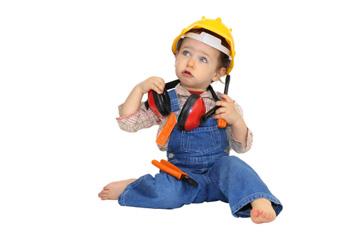Child Safety Laws At A Glance
The safety of children is a concern for every society. Children are a vulnerable section of the population, prone to abuse, exploitation, and neglect. Child safety laws have been enacted to protect children from harm and to safeguard their physical, mental, and emotional well-being. Child safety laws vary from country to country, but all aim to promote the rights of children and ensure that they are protected from harm.
What are Child Safety Laws?
Child safety laws are regulations, directives, and statutory provisions designed to protect children from harm. These laws address issues such as abuse, neglect, maltreatment, exploitation, and trafficking of children. Child safety laws also cover issues related to child welfare, adoption, custody, and protection services.
Child safety laws are enforced by government agencies, non-governmental organizations, and individuals appointed by the government. The laws are designed to ensure that children are safe from harm, receive appropriate care, and are able to develop into healthy and productive adults.
Types of Child Safety Laws
Child safety laws can be categorized into four main categories:
1. Child Abuse Laws: Child abuse laws define and prohibit any act that causes physical, emotional, or sexual harm to a child. These laws establish the legal basis for protecting children from abuse and provide for the apprehension and prosecution of abusers.
2. Neglect Laws: Neglect laws prohibit the failure of parents or caregivers to provide for the basic needs of children, such as food, clothing, shelter, medical care, or supervision. These laws are designed to promote the well-being of children and ensure that they are not exposed to harm.
3. Child Labor Laws: Child labor laws regulate the working conditions and employment of children. These laws set minimum age limits for employment, regulate hours of work, and prohibit the employment of children in hazardous conditions.
4. Child Welfare Laws: Child welfare laws are aimed at promoting the welfare and well-being of children in various contexts, such as adoption, guardianship, child custody, and protection services. These laws are designed to ensure that children are placed in safe and caring environments and that their rights and interests are protected.
Effectiveness of Child Safety Laws
Child safety laws have been effective in preventing and reducing the incidence of harm to children. The effectiveness of these laws depends on their enforcement, implementation, and monitoring. The success of child safety laws also depends on individual and collective efforts to promote child safety and welfare.
Enforcement: The effective enforcement of child safety laws is key to ensuring that children are protected from harm. Governments and other agencies responsible for the enforcement of child safety laws must be adequately resourced and have the capacity to respond to child safety issues promptly and effectively.
Implementation: The effective implementation of child safety laws requires the collaboration of various stakeholders, such as governments, civil society organizations, and individuals. The implementation of child safety laws must be guided by a child-centered approach that prioritizes the welfare of children.
Monitoring: The monitoring of child safety laws requires the collection of data on the incidence and prevalence of child abuse, neglect, and other forms of harm. Governments and other agencies responsible for the monitoring of child safety laws must have robust data collection and monitoring systems that enable them to respond to emerging child safety issues.
Individual and Collective Efforts: Child safety laws are only one aspect of promoting child safety and welfare. Individual and collective efforts are also critical in promoting child safety and welfare. Communities, families, and individuals have a role to play in promoting the safety and welfare of children, through awareness-raising, advocacy, and providing support to families and children.
Conclusion
Child safety laws are essential in preventing harm to children and promoting their welfare. These laws have been effective in reducing the incidence of harm to children. However, child safety laws need to be effectively enforced, implemented, and monitored. Individual and collective efforts are also critical in promoting child safety and welfare. By working together, we can promote the safety and welfare of children and ensure that they are protected from harm.

















